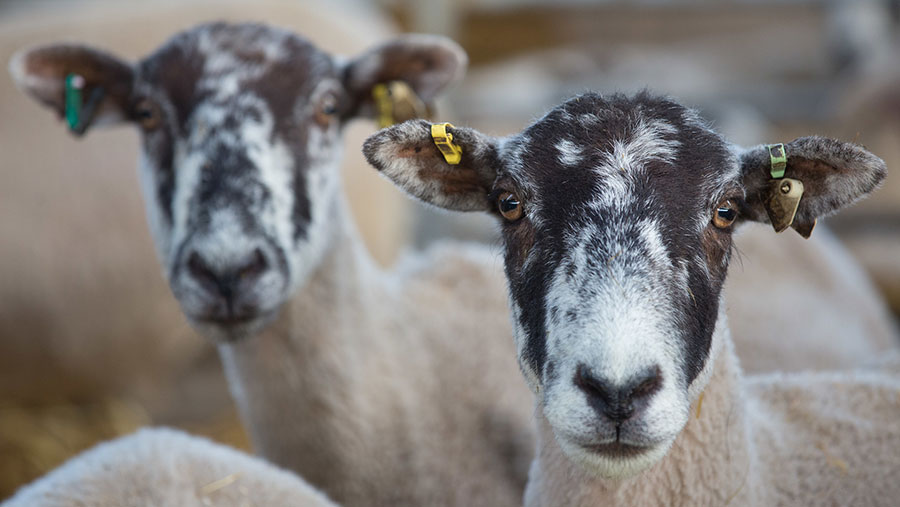Sheep genetics study hopes to use data to raise flock profit
 © Tim Scrivener
© Tim Scrivener Abattoir data and genomics are two key areas that will be explored in a sheep genetics scoping study that will inform future British flock breeding.
A Defra-funded project led by Scotland’s Rural College (SRUC) will recommend innovations in sheep breeding to maximise genetics, environmental gain and flock profit.
SRUC livestock geneticist Jo Connington told Farmers Weekly that one aim was to turn the sheep breeding pyramid “on its head” through use of commercial data from abattoirs.
By feeding back commercial data from cross-breds and commercial sheep this could be used to influence purebred selection decisions. The report will be complete at the end of 2018.
This project aims, in the long term, to improve the efficiency and productivity of the sheep sector, driving commercial aspects of sheep production Jo Connington, Scotland’s Rural College livestock geneticist
See also: How farmer-vet ‘clubs’ are improving flock health
Dr Connington said it was very early days in the study but the report would stress how far the UK sheep sector is behind competitors in Ireland and New Zealand in its use of genomics.
She added: “This project aims, in the long term, to improve the efficiency and productivity of the sheep sector, driving commercial aspects of sheep production.
“We will be exploring how to get to a stage where all the information we can capture in the supply chain is informing selection decisions.”
The project is made up of three work streams:
- A review of sheep genetic improvement programmes globally
- The definition of the appropriate breeding goals
- An estimation of the economic impact of implementing the breeding goals.
Project collaborators are the AHDB, the National Sheep Association, agribusiness consultancy AbacusBio and the Centre for Innovation Excellence in Livestock.
Together they will explore how different breeding goals and objectives will effect the sheep sector using genetic and economic modelling.
SRUC said breeding goals will look to deliver for maternal upland, maternal lowland and terminal production systems.
